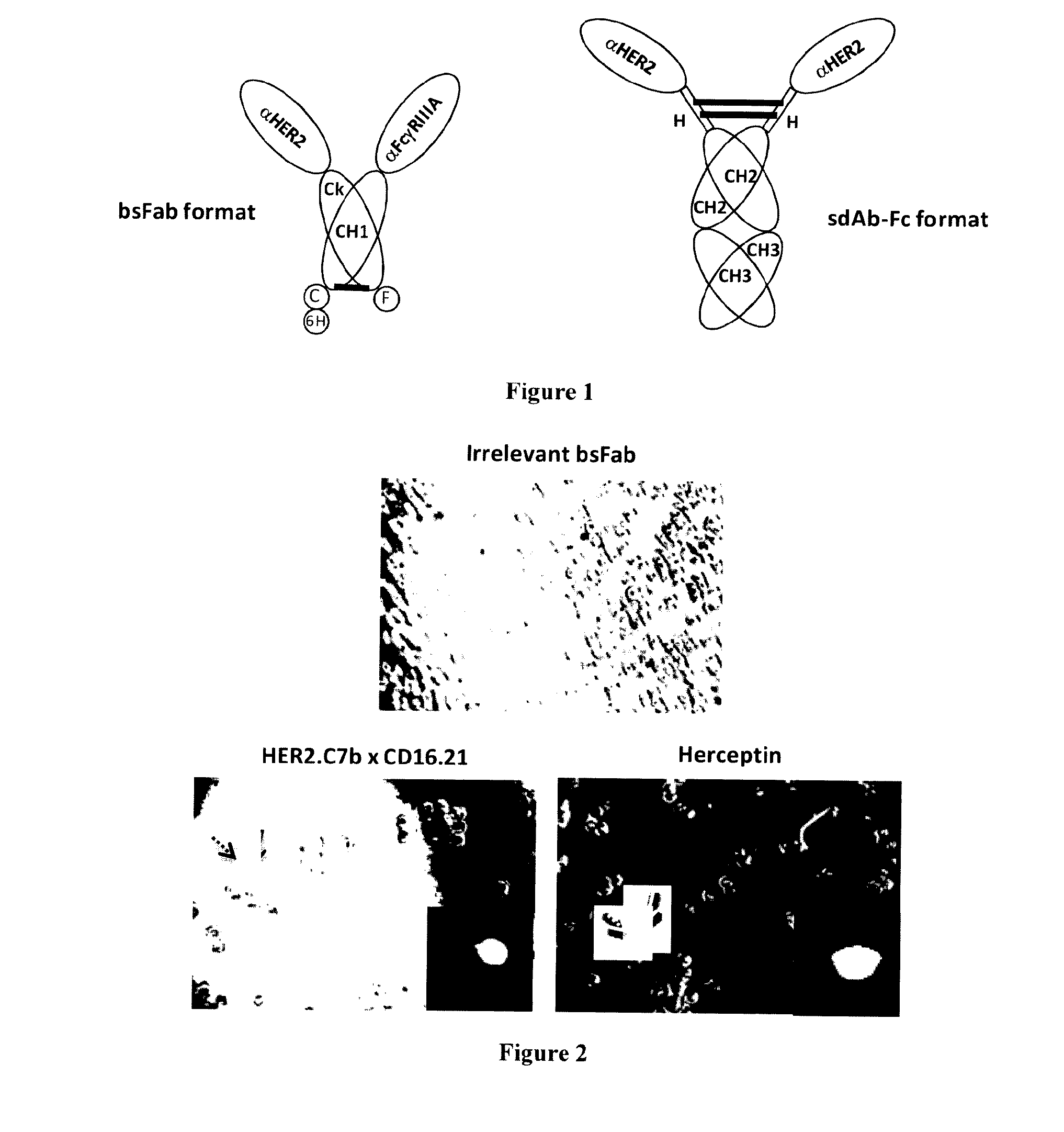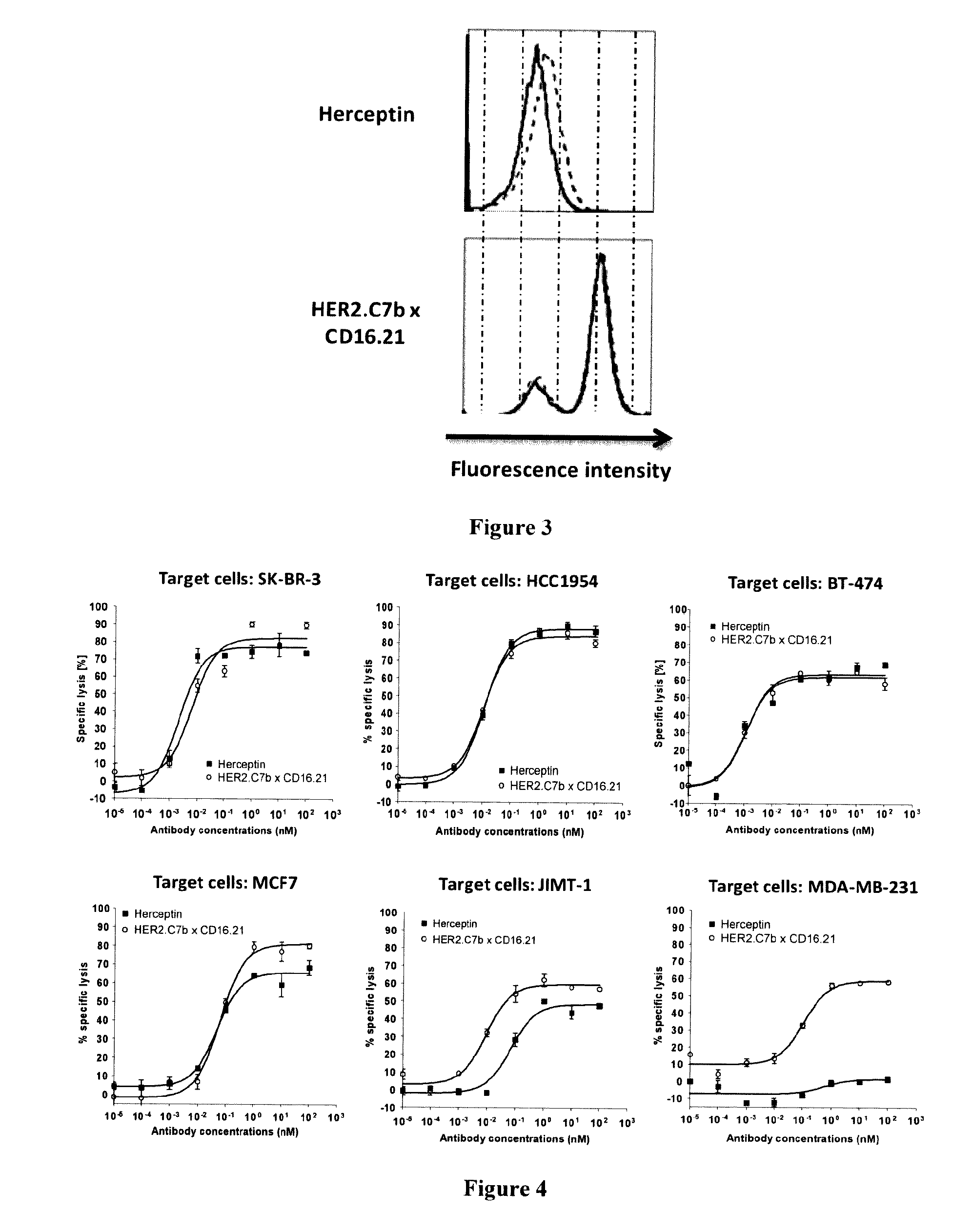Anti-her2 single domain antibodies, polypeptides comprising thereof and their use for treating cancer
a single-domain antibody and anti-her2 technology, applied in the field of antiher2 single-domain antibodies, can solve the problems of serious effects and difficult to improve the therapeutic effect of the drug
- Summary
- Abstract
- Description
- Claims
- Application Information
AI Technical Summary
Benefits of technology
Problems solved by technology
Method used
Image
Examples
example 1
Methods
[0055]Llama Immunization
[0056]A young adult male llama (Lama glama) was immunized subcutaneously at days 1, 30, 60, 90 and 120 with 50 million of HER2-expressing SK-OV-3 ovarian cancer cells. Sera were collected 15 days prior to each injection to follow the immune response against the immunogen.
[0057]VHH Library Construction
[0058]Blood samples were taken 15 days after each of the three latest immunizations and peripheral blood mononuclear cells were isolated by Ficoll-Histopaque-1077 (Sigma-Aldrich) discontinuous gradient centrifugation. Total RNA was isolated by acid guanidinium thiocyanate / phenol / chloroform extraction and synthesis of the cDNA was performed with Superscript II reverse transcriptase (GibcoBRL) using primer CH2FORTA4 (Arbabi Ghahroudi et al, FEBS, 1997). A first PCR was performed using an equimolar mixture of four backward primers originally designed to anneal on human VH genes (5′ VH1-Sfi: 5′-CATGCCATGACTCGCGGCCCAGCCGGCCATGGCCCAGGTGCAGCTGGTGCAGTCTGG-3′(SEQ I...
example 2
Results
[0085]Construction of Bispecific HER2.C7bxCD16.21 Antibody:
[0086]The bispecific antibody (bsFab) HER2.C7bxCD16.21 consists of two covalently linked fusion proteins (FIG. 1). In the first one, a lama single domain antibody (sdAb) against the human HER2 receptor (HER2.C7b) is fused by its C-terminal end to the N-terminal end of the Ck constant domain of a human IgG1; in the second one, a sdAb against the human FcγRIII receptor (CD16.21) is fused by its C-terminal end to the N-terminal end of the CH1 domain of a human IgG1. The CH1 and Ck domains linked through a disulfide bond act as an heterodimerization motif. The cellular binding specificity of the bsFab was evaluated by flow cytometry on SK-BR-3 cells and on FcγRIIIa transfected Jurkat cells (data not shown). To allow direct comparison with HER2 engagement, a fusion protein (HER2.C7b-Fc) made of two HER2.C7b sdAb fused to the hinge, CH1 and CH2 domains of a human IgG1 was constructed. This molecule was thus bivalent for HER...
PUM
| Property | Measurement | Unit |
|---|---|---|
| molecular weight | aaaaa | aaaaa |
| temperature | aaaaa | aaaaa |
| temperature | aaaaa | aaaaa |
Abstract
Description
Claims
Application Information
 Login to View More
Login to View More - R&D
- Intellectual Property
- Life Sciences
- Materials
- Tech Scout
- Unparalleled Data Quality
- Higher Quality Content
- 60% Fewer Hallucinations
Browse by: Latest US Patents, China's latest patents, Technical Efficacy Thesaurus, Application Domain, Technology Topic, Popular Technical Reports.
© 2025 PatSnap. All rights reserved.Legal|Privacy policy|Modern Slavery Act Transparency Statement|Sitemap|About US| Contact US: help@patsnap.com



